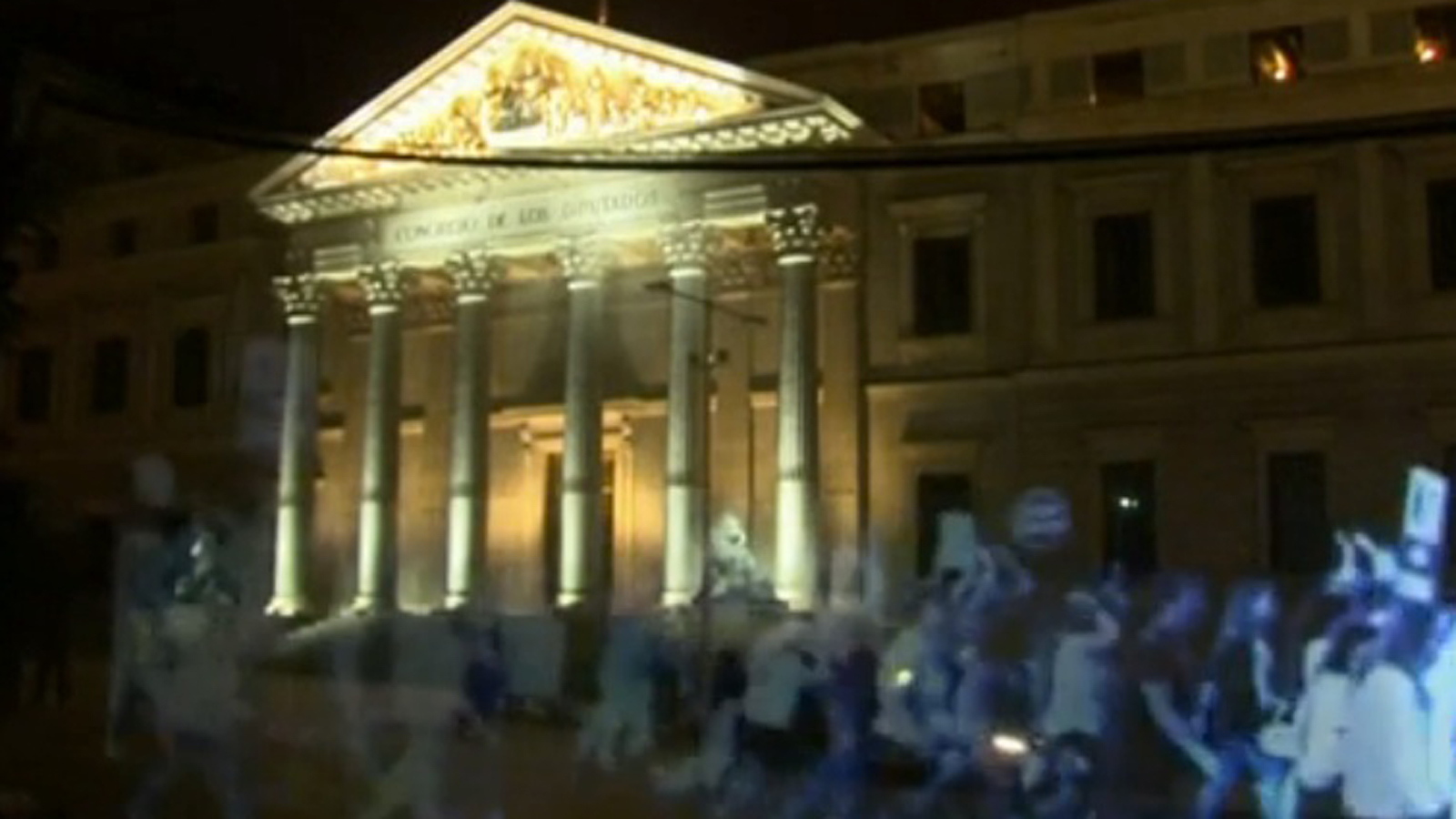Holographic protesters take to the streets in Spain
Tupac would be proud

Thousands gathered outside of Spain's lower house of parliament over the weekend to lambast recent efforts by the country's government to crack down on citizens' freedoms. It's not an uncommon scene in regions across the globe, except this protest was different in one major way: the protesters were all holograms.
Dubbed the Holograms for Freedom movement and run by the group No Somos Delito, which means We Are Not Crime, organizers projected ghostly images of participants from around the world in front of the parliament building in Madrid.
The "first hologram protest in history" served not only as a demonstration of dissent but also as a powerful reminder of what Spanish citizens could lose July 1.
It's then that a new set of laws are scheduled to go into effect banning certain forms of protest, including gathering outside of parliament. According to Fusion, the new laws would create 45 new infractions that mainly deal with dissent.
"Ultimately, if you are a person, you won't be allowed to express yourself freely," a woman says on the Holograms for Freedom website. As she transforms into a pale digital image, she adds, "You will only be able to do it if you become a hologram."
Participants could submit their likenesses using a webcam on the Holograms for Freedom site, making the demonstration a truly global and technologically savvy undertaking.
- Meet HoloLens, Microsoft's AR visor
Image credit: Screengrab from RTVE.es broadcast
Get daily insight, inspiration and deals in your inbox
Sign up for breaking news, reviews, opinion, top tech deals, and more.
Michelle was previously a news editor at TechRadar, leading consumer tech news and reviews. Michelle is now a Content Strategist at Facebook. A versatile, highly effective content writer and skilled editor with a keen eye for detail, Michelle is a collaborative problem solver and covered everything from smartwatches and microprocessors to VR and self-driving cars.
